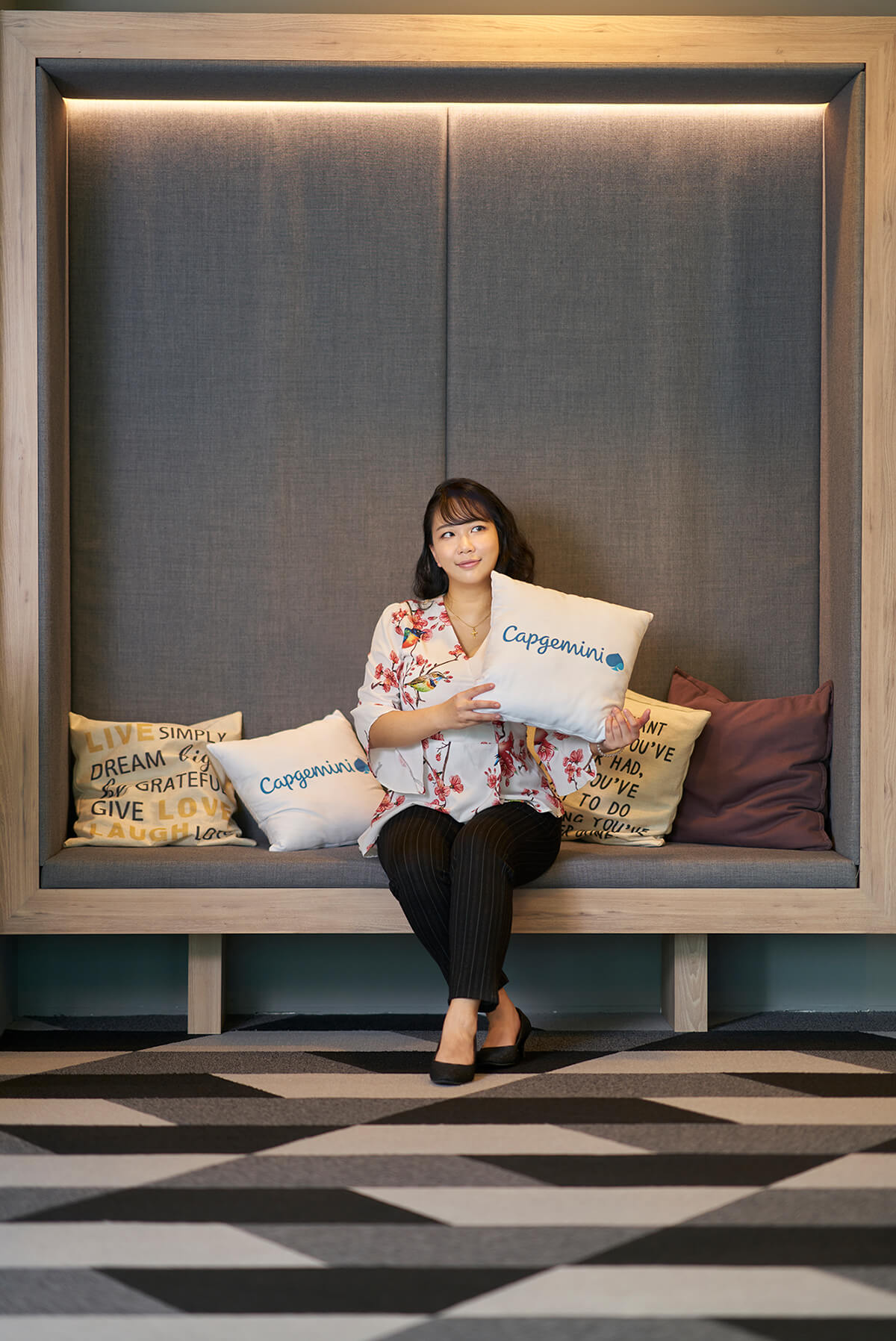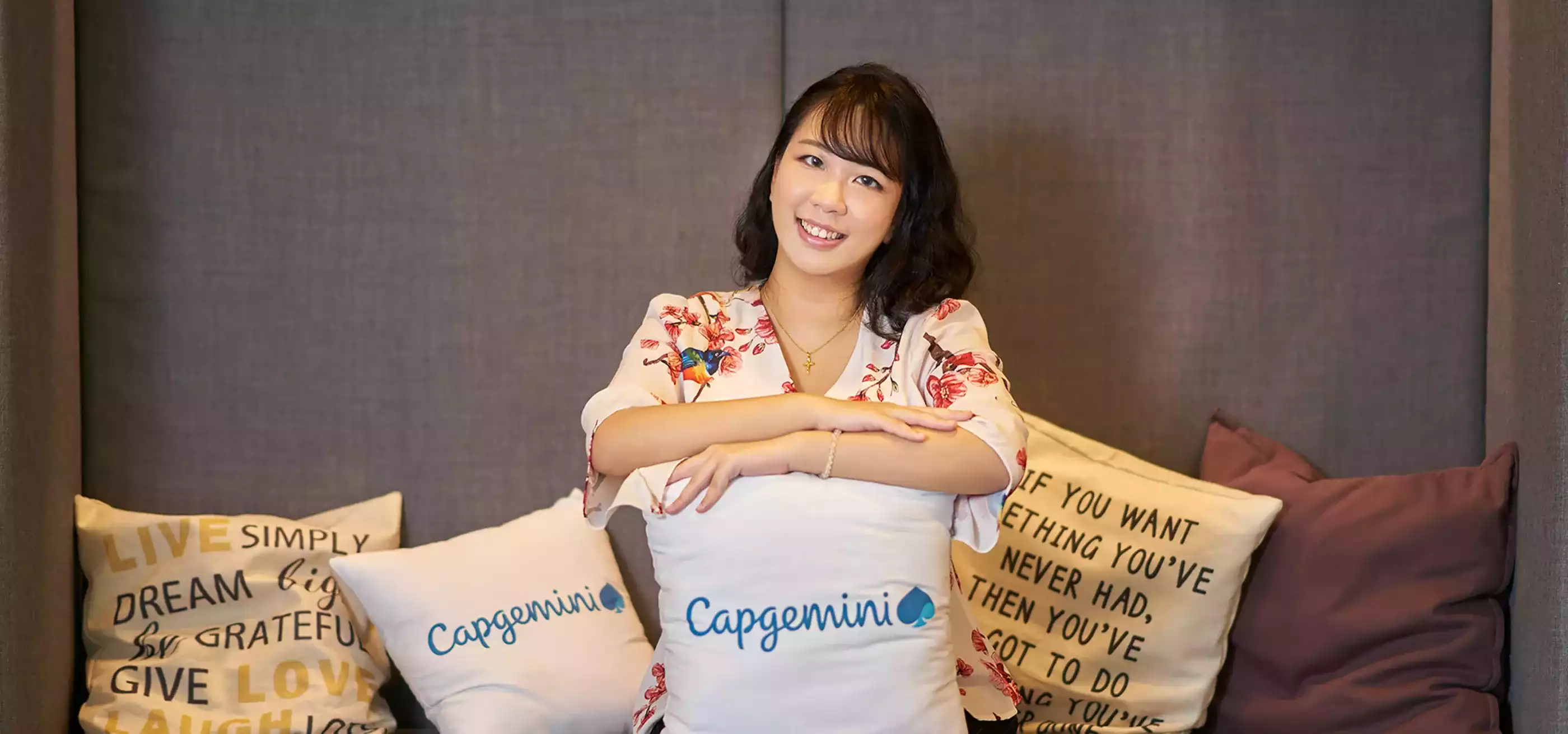User experience and user interface (UX/UI) design have been trending topics over the last few years, but in reality, these aspects of design have always been evident in many of our daily transactions and experiences. While UI refers to how a human being interfaces with software applications or hardware devices, UX encompasses a much wider field and can refer to a user’s interaction with processes, services, or products. As an associate experience designer and illustrator at Idean, 2018 BFA in Digital Art and Animation graduate Sherilyn Kan helps to create and design such user experiences.
Idean is a global consultancy firm that specializes in UX/UI, customer experience, visual design, and service design. It was acquired by the Capgemini Group in 2017 as a way to expand the company’s impact and reach. Sherilyn joined the firm in early 2019 and has been part of a team that uses design solutions to solve the business problems of clients. She works closely with colleagues from multidisciplinary backgrounds in business analytics, design, and development in order to create and deliver end-to-end products and experiences for clients.
So, what does it take to succeed in the field? Sherilyn says that good UX/UI design is deceptively simple, since the end result should be an experience that is uncomplicated and intuitive to use. Most of the time, good UX design is so seamless it’s not even noticeable. In fact, bad UX design is much more likely to catch a user’s attention. Think of a scenario where you struggled to navigate an application or a website. Chances are, those were instances of poorly designed UX, she says. Sherilyn further explains that the challenge of creating good design lies in striking a fine balance between the needs of both the end users and various stakeholders. “When you design user experiences and interfaces, it is rarely for a single user type,” Sherilyn says. “Skilled UX/UI designers should therefore have a good balance between a strong aesthetic sense as well as a logical mind. The field requires both to succeed.”
 In order to do her job effectively, Sherilyn meets and works with people from diverse roles, backgrounds, and experiences. “I strongly believe that everyone has a different story to tell, and that influences their perspectives on the set of problems we’re currently trying to solve. Being immersed in their perspectives has added layers of consideration to my art and design that I’ve never thought about before,” she says. She counts this as one of her favorite aspects of the job and explains that being an experience designer is really about stepping into the shoes of someone else and understanding the problems they are facing. From there, Sherilyn and her team will explore opportunities and solutions to these problems. The solutions are not always limited to digital interfaces but can also be in the form of offline experiences. Approaching problems from an alternative perspective also challenges Sherilyn to grow as a designer, since she has to work through technical limitations while implementing feasible solutions.
In order to do her job effectively, Sherilyn meets and works with people from diverse roles, backgrounds, and experiences. “I strongly believe that everyone has a different story to tell, and that influences their perspectives on the set of problems we’re currently trying to solve. Being immersed in their perspectives has added layers of consideration to my art and design that I’ve never thought about before,” she says. She counts this as one of her favorite aspects of the job and explains that being an experience designer is really about stepping into the shoes of someone else and understanding the problems they are facing. From there, Sherilyn and her team will explore opportunities and solutions to these problems. The solutions are not always limited to digital interfaces but can also be in the form of offline experiences. Approaching problems from an alternative perspective also challenges Sherilyn to grow as a designer, since she has to work through technical limitations while implementing feasible solutions.
In her time at Idean so far, Sherilyn has had the opportunity to work on varied and interesting projects that range from responsive web design, to graphic design for marketing collateral, and even wayfinding design for public and private spaces. Each project brings about its own set of challenges, but Sherilyn credits her strong technical, aesthetic, and design skills she picked up during her time at DigiPen (Singapore) for helping her overcome these challenges.
Referencing a quote by American radio personality Ira Glass, Sherilyn says a creator’s work will only be as good as their ambitions if they go through a volume of work to ‘close that gap.’ Sherilyn says that DigiPen (Singapore) gave her such an opportunity to close the gap. The structured curriculum gave Sherilyn the environment she needed to start building her own body of creative work, which in turn helped her to refine her own internal design processes and hone her execution and communication skills.
“DigiPen (Singapore) has instilled in me strong design fundamentals, both from an artistic and technical standpoint,” Sherilyn says. “These skills can never be taken away from me. I would like to sincerely thank the lecturers who have taught me — I will never forget the lessons, advice, and encouragement that they have given me along the way.”
